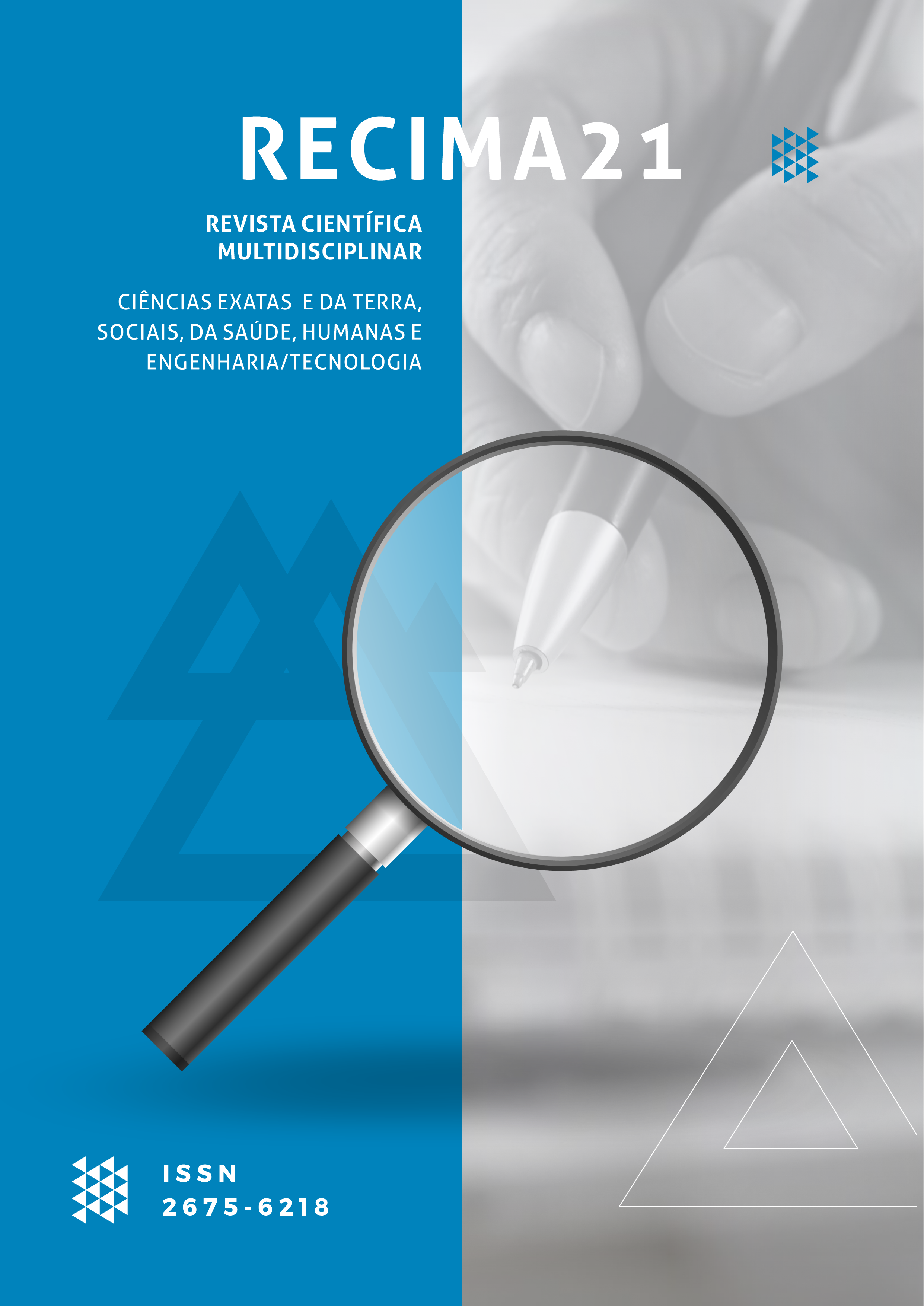CONFIRMATION BIAS IN INNOVATION DECISION-MAKING
DOI:
https://doi.org/10.47820/recima21.v3i7.1744Palavras-chave:
Behavioral economics, Neuroeconomics, Confirmation biasResumo
Potential innovators need to overcome many challenges. One such challenge is confirmation bias in decision-making. Human evolution has programmed the brain to act quickly in the face of a threat in the environment. In this way, thinking and (instantaneously) acting rationally is almost impossible for most people. This causes several negative effects on decision-making, notably cognitive biases. For example, an entrepreneur who wants to launch a new product on the market tends to convince herself/himself that her/his product is innovative, ignoring evidence to the contrary, this being a confirmation bias. An innovative analysis of the causes and consequences of the confirmation bias in innovation decision-making is the main goal of this article.
Downloads
Referências
Amabile, T. M., & Pratt, M. G. (2016). The dynamic componential model of creativity and innovation in organizations: Making progress, making meaning. Research in Organizational Behavior, 37, 157–183.
Andrew, J. P. & Sirkin, H. L. (2006). Payback. Boston: Harvard Business School Publishing Corporation.
Ariely, D. (2009). The end of rational Economics. Harvard Business Review. Available at https://hbr.org/2009/07/the-end-of-rational-economics, (Accessed on 28 June 2020).
Ariely, D. & Berns, G. (2010). Neuromarketing: the hope and hype of neuroimaging in business. Nature Reviews Neuroscience, 11 (4), 284–292.
Berns (2009). Iconoclast. Boston: Harvard Business Review Press.
Beshears, J. & Gino, F. (2015). Leaders as decision architects. Harvard Business Review. Available at https://hbr.org/2015/05/leaders-as-decision-architects, (Acessed on 22 November 2021).
Carter, R. (2009). Brain. London: DK.
Chavaglia, J., Filipe, J. A. & Caleiro, A. B. (2019). Creativity and innovation: a contribution of behavioral economics. International Journal of Innovation Studies. 3 (1), 12 - 21.
Chavaglia, J., Filipe, J. A., Ferreira, M. A. & Calliari, I. B. (2014). Motivation at work of Brazilian executives. International Journal of Latest Trends in Finance & Economic Sciences. 4 (2), 717 - 724.
Chavaglia, J., Filipe, J. A. & Ramalheiro, B. (2013). Neuroeconomics: the effect of context in decisions relating to the Brazilian electric sector. IIOAB Journal, 4 (3), pp 38 - 44.
Epstein, S.; Pacini, R.; Denes-Raj, V.; Heier, H. (1996). Individual differences in intuitive-experiential and analytic- rational thinking styles. Journal of Personality and Social Psychology, 71, 390–405.
Evans, J.; Stanovich, K. E. (2013). Dual-process theories of higher cognition: advancing the debate. Perspectives on Psychological Science, 8(3), 223–241.
Fox, J. (2015). From economic man to behavioral economics. Harvard Business Review, 93 (5), 79 – 85.
Frazzeto, G. (2013). How we feel – what science can – and can´t – tell us about our Emotions. New York: Doubleday.
Gary, L. (2006). Fighting cognitive deviations. Making Smart Decisions. Boston: Harvard Business School Press, 109 – 116.
Gaudeul, A., Crossetto, P. & Riener, G. (2017). Better stuck together or free to go? Of the stability of cooperation when individuals have outside options. Journal of Economic Psychology, 59, 99 - 112.
Hippel, E. V., Thomke, S. & Sonnack, M. (1999). Creating breakthroughs at 3M. Harvard Business Review. Available at https://hbr.org/1999/09/creating-breakthroughs-at-3m, (Accessed on 20 January 2022).
Hodgkinson, G. P., & Healey, M. P. (2014). Coming in from the cold: The psychological foundations of radical innovation revisited. Industrial Marketing Management, 43(8), 1306–1313.
Kim, W. C. & Mauborgne, R. (1997). Value Innovation: The Strategic Logic of High Growth. Harvard Business Review. 103 - 112.
Kounios, J. & Beeman, M. (2015). The eureka factor: aha moments, creative insight, and the brain. Independently Published.
Krstić, M. (2012). The role of rules in the evolution of the market system: Hayek’s concept of evolutionary epistemology. Economic annals, 57(194), 123-140.
Krstić, M. (2014). Rational choice theory and addiction behaviour. Market-Tržište, 26(2), 163-177.
LeDoux, J. (1996). The emotional brain: The Mysterious Underpinnings of Emotional Life. New York: Simon & Schuster.
Lieberman, M. D. (2007). Social cognitive neuroscience: A review of core processes. Annual Review of Psychology, 58, 259–289.
Lindstrom, M. (2008). Buyology: Truth and lies about why we buy. Sidney: Currency Press.
Loewenstein, G., Rick, S. & Cohen, J. D. (2008). Neuroeconomics. Annual Review of Psychology, 59, 647 - 672.
Luca, M. (2021). Leaders: stop confusing correlation with causation. Harvard Business Review. Available at https://hbr.org/2021/11/leaders-stop-confusing-correlation-with-causation, (Accessed on 20 January 2022).
Sandroni, P. (2007). Dicionário de economia do século XXI. Rio de Janeiro: Record.
Schopenhauer, A. (2013). The art of literature. Star Publishing, e-book Kindle.
Schumpeter, J. A. (1983). The theory of economic development. Transaction Publishers, e-book Kindle.
Silva, R. & Filipe, J. A. (2013). The homo neuroeconomicus: a window for the future. IIOAB Journal, 4 (3), 31 - 37.
Soll, J. B., Milkman, K. L. & Payne, J. W. (2014). Outsmart your own biases, Harvard Business Review. Available at https://hbr.org/2015/05/outsmart-your-own-biases, (Accessed on 4 November 2021).
Tetlock, P. & Gardner, D. (2015). Superforecasting: The Art and Science of Prediction. New York: Crown Publishers.
Thaler, R. & Sunstein, C. (2009). Nudge Improving Decisions About Health, Wealth, and Happiness. New York: Penguin Books.
Vergara, S. (2004). Projetos e relatórios de pesquisa em administração. São Paulo: Atlas.
Weinhold, B. (2006). Epigenetics: the science of change. Environmental Health Perspective. Available at https://www.ncbi.nlm.nih.gov/pmc/articles/PMC1392256/, (Accessed on 18 April 2021).
Downloads
Publicado
Edição
Seção
Categorias
Licença
Copyright (c) 2022 RECIMA21 - Revista Científica Multidisciplinar - ISSN 2675-6218

Este trabalho está licenciado sob uma licença Creative Commons Attribution 4.0 International License.
Os direitos autorais dos artigos/resenhas/TCCs publicados pertecem à revista RECIMA21, e seguem o padrão Creative Commons (CC BY 4.0), permitindo a cópia ou reprodução, desde que cite a fonte e respeite os direitos dos autores e contenham menção aos mesmos nos créditos. Toda e qualquer obra publicada na revista, seu conteúdo é de responsabilidade dos autores, cabendo a RECIMA21 apenas ser o veículo de divulgação, seguindo os padrões nacionais e internacionais de publicação.













